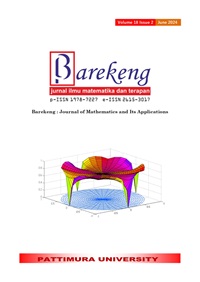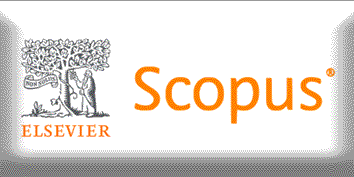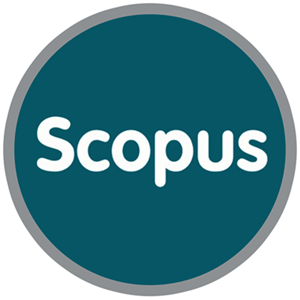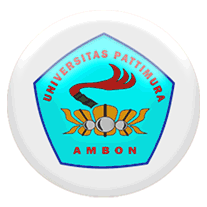CANONICAL CORRELATION ANALYSIS OF ECONOMIC GROWTH AND UNEMPLOYMENT RATE
Abstract
The paper discusses the relationship between economic growth and the unemployment rate in Indonesia in each province in 2021. Both variables are considered as the dependent variable and there are 5 independent variables used in this research such as human index development, wage minimum region, poor citizens percentage, investment, and farmer rate value in each province. The method used to analyze is canonical correlation analysis, which is one of the dependent methods that are used for multivariate analysis. This method was used to determine which variable had the most significant relationship between dependent and independent variables, the data was taken from the Center of Statistics Bureau Indonesia in 2021. The result shows that among independent variables the human index development had the strongest relation it had 79%, while the correlation between the dependent and independent variable the unemployment rate gives the strongest influence it is 68%.
Downloads
References
P. T. Michael and S. C. Smith, Pembangunan Ekonomi, edisi 9, Jakarta: Airlangga, 2000.
R. Nurkse and Hutagalung, Masalah pembentukan modal di negara-negara jang sedang membangun,, Djakarta: Bharata, 1964.
M. R. Cili and Alkhaliq, “Economic Growth and Inflation: Evidence from Indonesia,” Signifikan: Jurnal Ilmu Ekonomi, vol. 11, no. 1, pp. 145-160, 2022.
W. K. Hardle and L. Simar, Applied Multivariate Statistical Analysis, New York: Springer, 2014.
R. A. Johnson and W. W. D, Applied Multivariate Statistical Analysis 4th ed, New York: Prentice Hall, 1998.
J. F. Hair, W. C. J. Black, B. J. Babin and E. A. R, Multivariate Data Analysis 7th ed, New York: Prentice Hall International, Inc., 2009.
A. Rencher, Multivariate Statistical Inference and Applications, New York: John Wiley & Sons, Inc., 1998.
Y. Akbas and C. Takma, “Canonical correlation analysis for studying the relationship between egg production traits and body weight, egg weight and age at sexual maturity in layers,” J. Anim. Sci., vol. 50, no. 4, pp. 162-168, 2005.
D. Chenfeng and W. Dongrui, “Canonical Correlation Analysis (CCA) Based Multi-View Classification: An Overview,” arXiv:1907.01693v, pp. 1-4, 2021.
L. Sun S and J. Ye, “Canonical correlation analysis for multilabel classification: A least-squares formulation extensions and analysis,” IEEE Trans. Pattern Anal. Mach. Intell., vol. 33, no. 1, pp. 194-200, 2011.
J. R. Kettenring, “Canonical analysis of several sets of variables,” Biometrika, vol. 58, no. 3, pp. 433-451, 1971.
J. Rupnik and J. Shawe-Taylor, “Multi-view canonical correlation analysis,” in Proc. Conf. Data Mining Data Warehouses, 2010.
P. L. Lai and C. Fyfe, “Canonical correlation analysis using artificial neural network,” in Proc. 6th Eur. Symp. Artif. Neural Netw, 1998.
S. Szedmak, D. R. Hardoon and J. Shawe-Taylor, “Canonical correlation analysis: An overview with application to learning methods,” Neural Comput, vol. 16, no. 12, pp. 2639-2664, 2004.
X. Chen, L. Han and J. Carbonell, “Structured sparse canonical correlation analysis,” in Proc. Int. Conf. Artif. Intell. Statist, 2012.
D. Gujarati, Ekonometrika Dasar, Jakarta: Erlangga, 1978.
F. H. Joseph, C. B. William, J. B. Barry and E. A. Rolph, Multivariate Data Analysis, Seventh Edition, New Jersey: Pearson Prentice Hall International Inc, 2010.
Copyright (c) 2024 Joko Purwadi, Bagus Gumelar, Tri Widiantoro, Zhilvia Noviana Ningsih

This work is licensed under a Creative Commons Attribution-ShareAlike 4.0 International License.
Authors who publish with this Journal agree to the following terms:
- Author retain copyright and grant the journal right of first publication with the work simultaneously licensed under a creative commons attribution license that allow others to share the work within an acknowledgement of the work’s authorship and initial publication of this journal.
- Authors are able to enter into separate, additional contractual arrangement for the non-exclusive distribution of the journal’s published version of the work (e.g. acknowledgement of its initial publication in this journal).
- Authors are permitted and encouraged to post their work online (e.g. in institutional repositories or on their websites) prior to and during the submission process, as it can lead to productive exchanges, as well as earlier and greater citation of published works.






1.gif)



